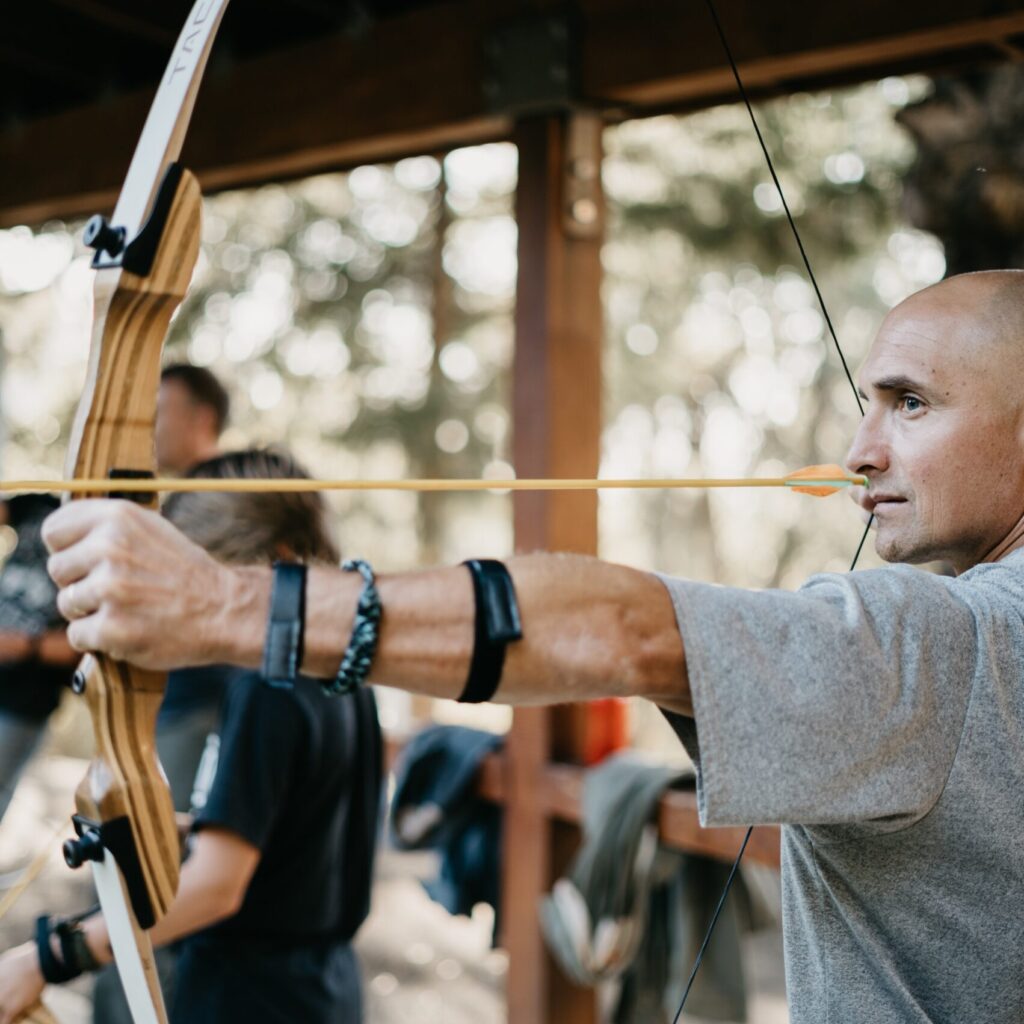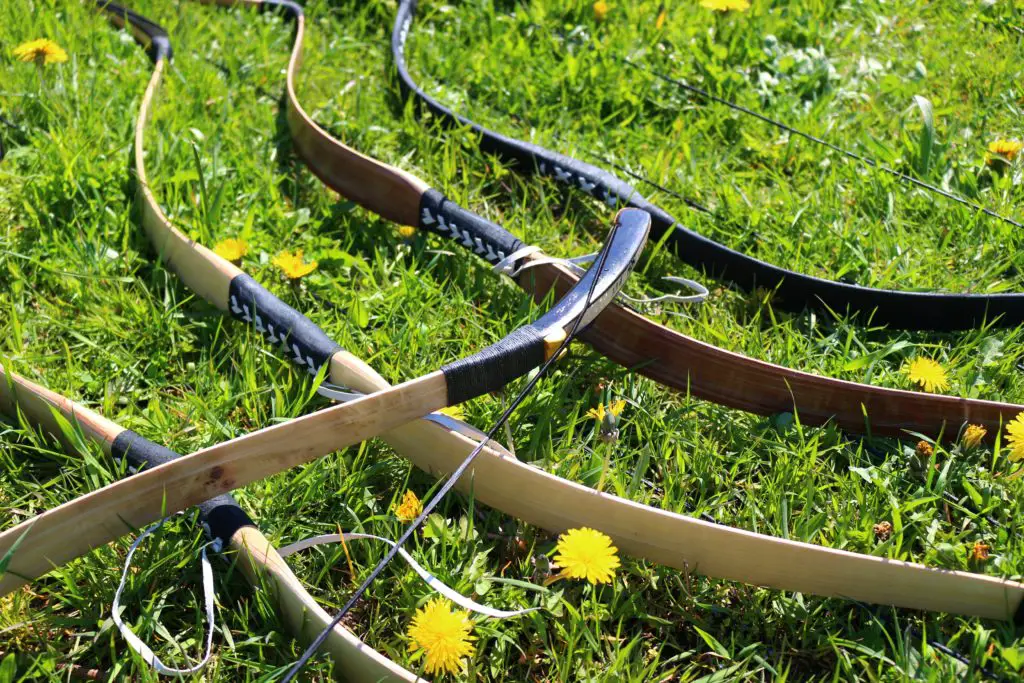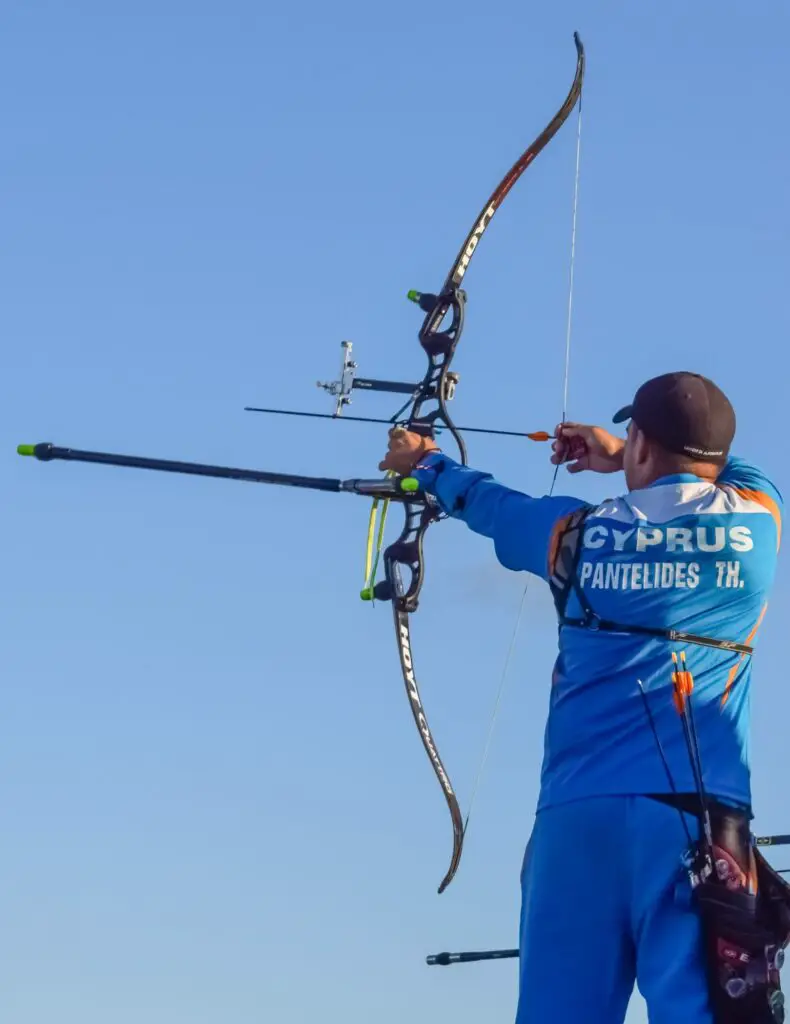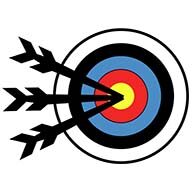There is a huge variation in prices. If you are just getting started you might get overwhelmed with the amount of choice. You might also wonder whether the proverb ‘’you get what you paid for also holds in archery’’. If you do not have any experience with bows, it might be really difficult to access the quality of each bow. Therefore I am going to help you make the right choice without breaking the bank. In a hurry?, here is my short answer:
Cheap recurve bows can be surprisingly high quality. If you are a serious archer you shouldn’t buy a beginner’s bow with a wooden riser or a proprietary limb fitting. Therefore, it is better to spend a little bit more and buy a proper Olympic recurve bow or a traditional bow.
If you are looking for your first bow, I would highly advise reading the remainder of this article. I can’t fit all the important nuances in 58 words, but they are quite important to know. I will first discuss the three different bow types, within the recurve category. Next, I will provide you with some points for consideration before making your choice. At the end of this article, I will discuss the benefits of each type of bow and give my personal opinion.
Different type of bows
In general there are 3 types of recurve bows: beginner, traditional and Olympic recurve. Although the lines tend to be fussy, it’s important to know the differences between these bows.
Beginner’s bow
The best way to spot a beginner’s bow is by looking at three distinct features.
- It is a takedown bow: this means that you can remove the limbs (often with a screw knob) for easy storage.
- The riser is made from wood: the riser is the middle section part of the bow, which you are holding.
- The limb fitting is proprietary: the limb fitting refers to how the limbs are attached to the riser. If this is a proprietary fitting, you won’t be able to attach limbs from other manufacturers to this riser.
Beginner bows are essentially old-school Olympic recurve bows. Before there were major innovations in limb fittings, all Olympic recurve bows had wooden risers and proprietary screw-on limb fittings. Since the 90s, however, bow manufacturers have advanced their techniques and built more advanced risers and limbs.
A beginner’s bow has therefore a lot of similar features to an Olympic recurve bow. They often have bushings for the front stabilizer, button, and sight. These features are essential to teaching archers the fundamentals of Olympic recurve archery, while also providing you the option to shoot more traditionally.

Traditional bow
The distinction between a traditional bow and a beginner bow is obvious. A traditional bow looks like the bows you see in documentaries and films about history. These bows clearly replicate the look and feel bows had in ancient times. These bows, therefore, have no screw holes to attach sights, stabilizers or a button. Since the limbs are fixed you also cannot exchange them.

Olympic recurve bow
If you look at a fully equipped Olympic recurve bow, you will clearly see the differences between this and a beginner bow. If you remove all the stabilizers, sights, and other aids, it will look very similar to a beginner’s bow. The most distinctive feature is that the riser of an Olympic recurve bow is always made out of metal instead of wood.
A less distinctive but more important feature is the limb fitting. These bows have an ILF or Formula (less common) fitting, allowing you to change the limbs between manufacturers. These limb fittings also allow you to tune the limb alignment and tiller, which allows you to tune the bow to your shooting style.
Many beginner bows allow you to add a front stabilizer and a sight. They, however, often lack the bushings to add an upper stabilizer, lower stabilizer, and a screw on arrow wrest. It is also not possible to change the grip of a beginner bow. Therefore a beginner bow is not ideal for shooting the Olympic recurve style.
I know there is a lot of confusion, about what Olympic recurve actually means, therefore I have a dedicated article to address this question: ‘’What is Olympic recurve archery?’’

Some myths debunked
When people think about cheap equipment they often think of lesser quality. Although this often is the case with a lot of consumer goods, you shouldn’t infer the quality of a product purely on the price.
They won’t last long
A lot of people believe that cheap bows won’t last long, because they believe that they are made from less quality materials. Although it’s true that more expensive bows tend to have heavier risers and limbs made from carbon fiber instead of wood, I think this is absolutely overstated. I have many cheap limbs and only one pair kept breaking, which I believe was due to a manufacturing error. Most archers will shoot with their first limbs at most 2 years, upon switching to a heavier pair. Therefore, it’s quite a waste to buy really expensive limbs, since you probably won’t use it for a long time.
To check the quality of the bow, it is always a good idea to check out some reviews. If you notice a lot of bad reviews they often have a systematical manufacturing error. But if you don’t see any negative reviews, I believe it’s safe to buy even the cheapest bow you can find.
They shoot less accurate
Bow manufacturers make a lot of claims; by far the most common claim is that their bow shoots more accurately. Although it would be awesome to have a bow that magically allows you to shoot very accurately, this is not the reality. About 99,9% of all the accuracy comes from the shooter, most variation between shots comes from an inconsistent shot process.
Although a bow can greatly help you get consistent, the bow itself will not be much more accurate. I have shot with a few really cheap bows (below $150) and I got really nice groupings. If you have the right equipment to fit your shooting style, the actual price doesn’t matter. The funny thing is that there are even some Chinese manufacturers that make some great equipment for a really low price.
Why I advise against buying a beginner’s bow
When you are looking online for a cheap beginner bow, a lot of archers will mention the Samick Sage. Many people believe that this bow is an excellent choice if you are just starting. I have to disagree; I think this bow isn’t a good starting point for most archers. There is absolutely nothing wrong with the bow itself, but it still is a beginner’s bow. Although it seems reasonable for a beginning archers to start with a beginner’s bow, I believe for a little more investment beforehand you can save a lot of money in the long term.
Beginner’s bow vs. Olympic recurve bow
In my experience, most archers outgrow their beginner’s bow within the first year. I even know a few archers that had their beginner bow for just a few months until they bought a traditional or Olympic recurve bow. The most important reason is the proprietary limb fitting, which means that you are stuck to the limbs you are currently having. You can of course invest in new limbs with this proprietary fitting, but if you ever want to switch to another bow, you have already invested a lot of money in a sub-optimal bow.
Therefore in my opinion it’s a better idea to start with a bow with an ILF fitting since you will have much more flexibility with this option. You can even buy the cheapest you can find on Amazon and it will probably be more versatile than a beginner’s bow. You will find that the difference is about $50 till $150 and it is absolutely worth it.
Another major advantage of the ILF fitting is that you can tune the bow’s center shot and tiller. Although I don’t think it’s absolutely necessary to tune your bow to perfection from the get-go, after a while, you probably want to tune it. With a beginner’s bow, you don’t have the option to tune it, therefore if the bow is incorrectly tuned, you can’t do anything about it.
Read the article below if you want more information about what you should consider when buying a recurve bow. I also showcase two bows I would recommend when buying a new recurve bow.
Buying a recurve bow – what you should consider
Beginner’s bow vs. traditional bow
If you are into traditional archery this is not applicable, since you can’t change the limbs of a traditional bow. But even if you want to get into traditional archery I wouldn’t recommend buying a beginner’s bow. When you are into traditional archery, you like to shoot a bow in its purest form without any doodads that weren’t available in ancient time. Therefore, I don’t really think you will like the look and feel of a beginner’s bow. Although the handle is wood, it still feels like a modern bow, which goes against idea behind traditional archery.
You also don’t have to start with a beginner’s bow for the price. There are really inexpensive traditional bows available and they are sometimes even cheaper than some beginner bows.
Making the choice
You might still wonder what type of bow to get. Would a beginner bow still fit my need or should I switch to a traditional or Olympic recurve bow? This can be a hard choice. Therefore I will give you some extra guidance in this section.
When a beginner’s bow is the right choice
I often see beginner’s bows at short events for people that have never shot a bow in their life before. This is with good reason; you don’t want to lend people expensive and complicated materials. Not only will this make archery more complicated than is needed, but it will also suffer more abuse. Therefore, most beginner bows are very stupid proof and allow for some abuse. If you want to use a bow for these types of activities I would absolutely recommend it.
If you are a serious archer and want to buy a bow for yourself, I do believe you will notice that you are missing some features within a few months. If you just want to shoot a few times per year in your backyard, this bow is a great option. It’s easier to shoot than a traditional bow and cheaper than an Olympic recurve bow. When you want to train at least one day per week or if you want to compete in competitions, I would highly recommend buying a traditional or an Olympic recurve bow instead.
Some reasons to buy a traditional bow instead
If you like the traditional archery style, meaning shooting without a sight or any other aids, a traditional bow will fit your style best. These bows replicate ancient bows which allow you to partake in traditional archery contests. These bows have a steep learning curve, meaning that you will have to invest a lot of time to shoot decently. This shooting style is also preferred by archers that don’t like to fumble around with sights, stabilizers, and other doodads. These archers want to shoot and by sheer practice increase their groupings.
Some reasons to buy an Olympic recurve bow instead
When you want to shoot the Olympic recurve style, you of course need an Olympic recurve bow. This type of archery is highly focused on technique and is a way more modern style of archery. This means that you are able to finely tune your bow to your liking. Therefore, trying new techniques and equipment plays an important role in this shooting style. In general, this shooting style is easier for beginning archers, because you have a lot of aids that help you shoot more accurately. The sight for example helps with aiming and the stabilizer removes vibration. This makes it easier to shoot reasonably accurately even if you haven’t fully mastered the technique and built up the muscles.
I also recommend buying an Olympic recurve bow, if you have no clue what archery discipline you like. The Olympic recurve platform is very versatile; therefore you can experiment with different configurations to find out what you like. Therefore, you can try archery both with a sight and without, since all aids can be removed from the bow. Therefore, you can experience both what traditional and Olympic recurve archery feels like. Since you can change the draw weight, it also is less of an issue if you bought too heavy limbs.
Final words
You probably noticed that I am not a big fan of beginner’s bows. I don’t get why so many people are recommending the Samick Sage, it is just a beginner’s bow like any other. Recommending a beginner’s bow to a serious archer is just a bad idea. I have seen so many archers abandon their beginner’s bow within a year, that I really believe that it’s a better idea to invest in a traditional or Olympic recurve bow. For just $50 more you can get a nice Traditional or Olympic recurve bow.
I hope this article was informative and that I helped you make the right decision. If you have any questions, feel free to ask them below. I will respond as soon as possible.
Tim van Rooijen
For as long as I can remember, I have always been fascinated by archery. First due to its historic significance but later because I like being outdoors. With this blog, I share my knowledge about Archery and how you can improve your shot. More about author…

